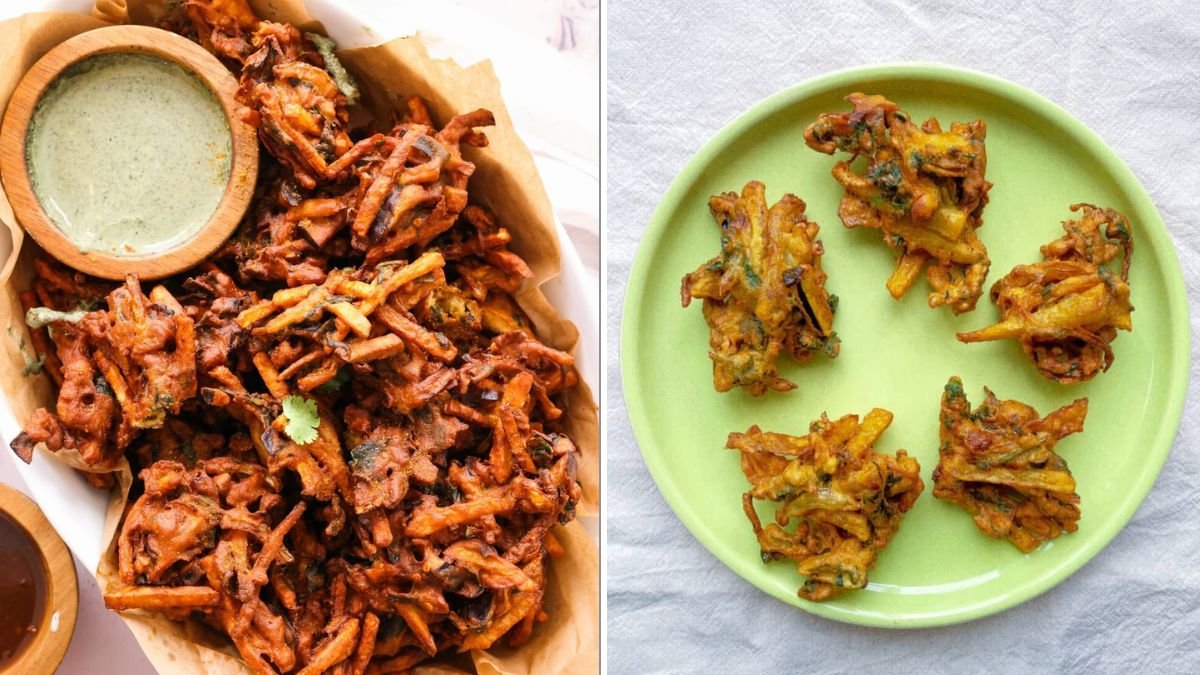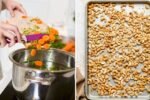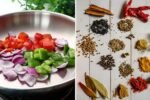There’s nothing quite as comforting as a plate of crispy, golden-brown Veg Pakoras served with a cup of hot chai on a rainy day. These crunchy Indian fritters—made with spiced gram flour batter and assorted vegetables—are not only a snack but a cherished tradition across India.
From roadside tea stalls to festive gatherings, Veg Pakoras hold a special place in every home. The secret to perfect pakoras lies in their crisp texture, flavorful seasoning, and light batter that doesn’t feel greasy.
In this detailed guide, we’ll walk you through 5 easy steps to prepare Veg Pakoras that are irresistibly crunchy on the outside and soft inside—just like your favorite street food.
What Are Veg Pakoras?
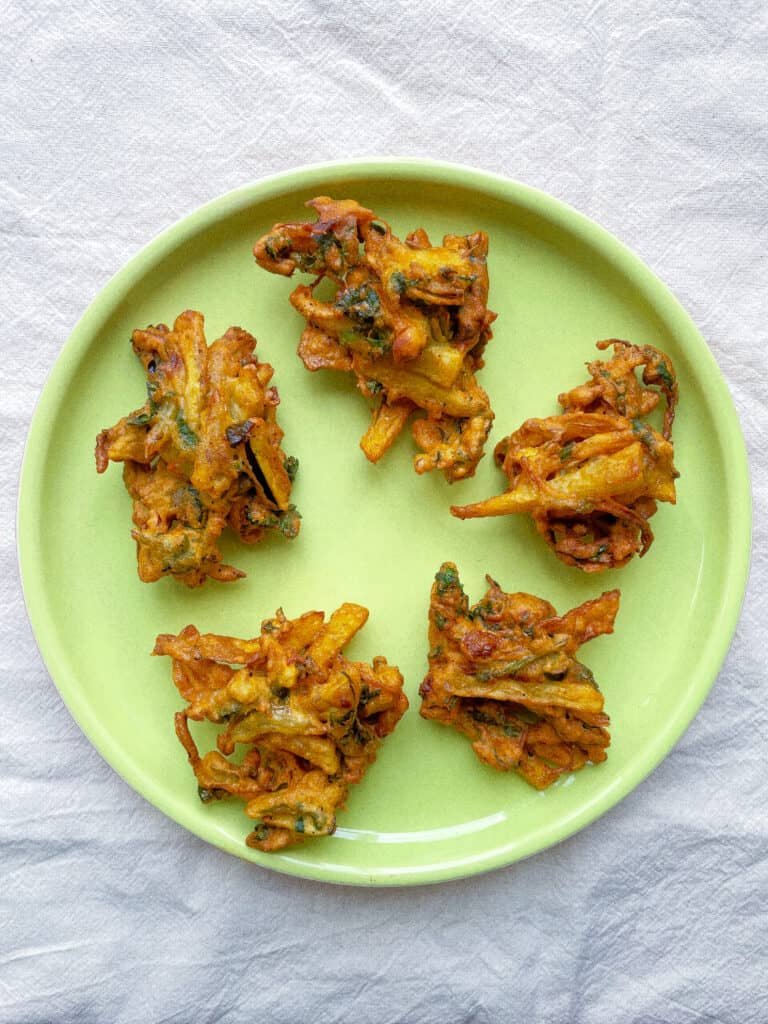
Pakoras (also called bhajiyas or fritters) are deep-fried snacks made by coating vegetables in a spiced gram flour (besan) batter and frying them until golden.
They can be made with a wide range of vegetables—onions, potatoes, spinach, cauliflower, cabbage, or even mixed veggies. Each version offers a unique flavor and texture.
While they’re simple to make, the difference between okay pakoras and perfect pakoras comes down to a few techniques—batter consistency, frying temperature, and seasoning balance.
Let’s start by gathering what you need.
Ingredients You’ll Need
For the Batter:
- 1½ cups gram flour (besan)
- 2 tbsp rice flour or cornflour (for extra crispiness)
- ½ tsp turmeric powder
- 1 tsp red chili powder (adjust to taste)
- 1 tsp coriander powder
- 1 tsp carom seeds (ajwain)
- Salt to taste
- Water (about ¾ cup or as needed)
For the Vegetables:
You can mix and match based on availability:
- 1 medium onion, thinly sliced
- 1 potato, thinly sliced
- ½ cup shredded cabbage
- 1 carrot, grated
- ½ cup chopped spinach
- 2 green chilies, finely chopped
- 2 tbsp fresh coriander leaves, chopped
For Frying:
- Oil, for deep frying (preferably mustard oil, sunflower oil, or peanut oil)
Optional Add-ons:
- A pinch of baking soda for lighter pakoras
- A few chopped curry leaves for added aroma
Step 1: Prepare the Vegetables
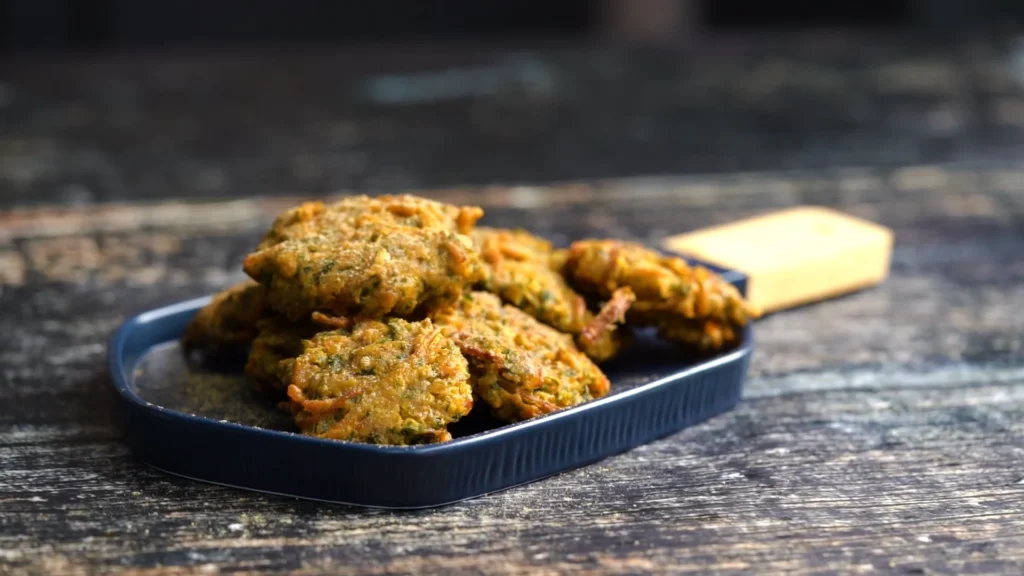
The first step is all about prepping your veggies correctly so they cook evenly and stay crisp.
- Wash all the vegetables thoroughly and pat them dry with a clean towel.
- Slice or chop them evenly—thin slices are key for quick, even frying.
- Slice onions and potatoes thinly.
- Grate carrots and cabbage finely.
- Chop spinach and coriander roughly.
- Add all the chopped vegetables into a large mixing bowl.
- Sprinkle a little salt and toss lightly. Let them rest for 5 minutes to release excess moisture.
This step helps the veggies soften slightly, so they mix better with the batter later.
Pro tip: If you’re using watery vegetables like spinach or cabbage, reduce the water in the batter slightly so it doesn’t become runny.
Step 2: Make the Perfect Batter
The batter is the backbone of crispy pakoras. It needs to be flavorful, smooth, and thick enough to coat the vegetables without dripping.
How to prepare the batter:
- In a large bowl, combine gram flour, rice flour, turmeric, chili powder, coriander powder, ajwain, and salt.
- Add water gradually while whisking. You’re aiming for a thick yet flowing consistency—similar to pancake batter.
- Add the vegetables to the batter and mix well until all pieces are evenly coated.
Optional: Add a pinch of baking soda if you want extra fluffiness.
Pro tip: Avoid adding too much water at once—start with half and increase as needed. A thick batter helps pakoras stay crunchy instead of soggy.
Step 3: Heat the Oil to the Right Temperature
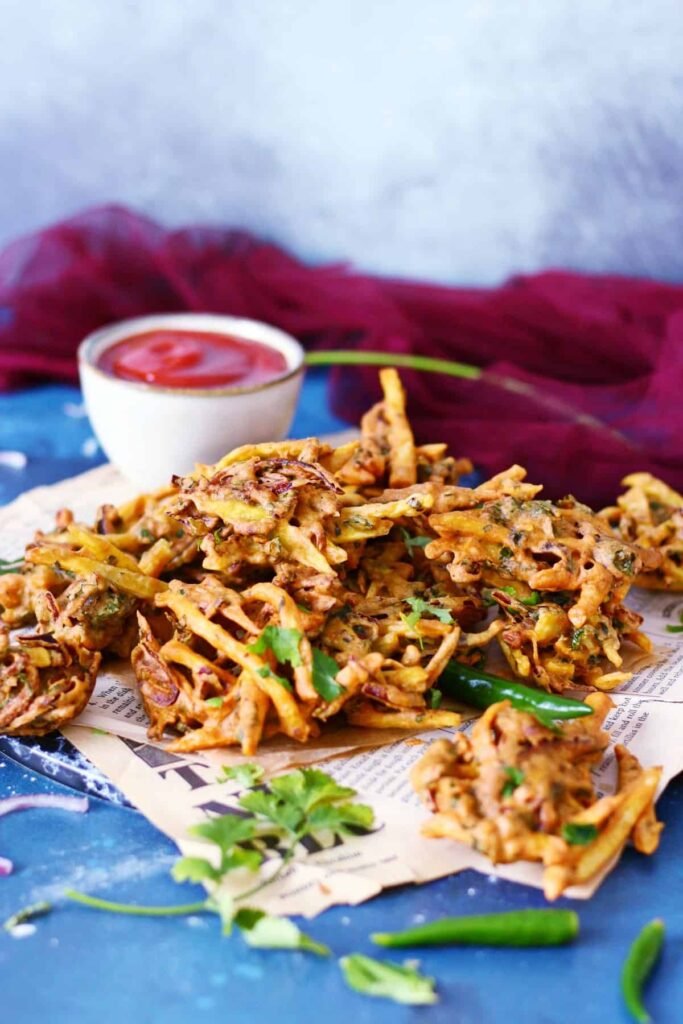
Frying temperature determines whether your pakoras turn out crispy or oily. Too low, and they’ll soak up oil; too high, and they’ll burn outside while staying raw inside.
How to test the temperature:
- Heat oil in a deep pan over medium flame.
- Drop a tiny bit of batter into the oil—if it rises to the top quickly without burning, the oil is ready.
Ideal frying temperature: 170–180°C (340–355°F)
If you don’t have a thermometer, remember:
- If pakoras brown too fast → oil is too hot.
- If they take too long and absorb oil → oil is too cold.
Pro tip: Always maintain a steady medium-high heat throughout frying.
Step 4: Fry the Pakoras Until Crispy Golden
Now comes the fun part—watching your batter turn into crunchy golden fritters.
How to fry:
- Once the oil is hot, gently drop small portions of the vegetable-batter mixture using a spoon or your fingers. Don’t overcrowd the pan; fry in batches.
- Fry on medium heat, turning occasionally, until pakoras are golden brown and crisp on all sides (about 4–6 minutes per batch).
- Remove using a slotted spoon and drain excess oil on a paper towel or wire rack.
Pro tip: Adding rice flour ensures extra crunch. You can also double-fry them briefly if serving later—just give them a second fry for 30 seconds before serving.
Optional: For a street-style twist, sprinkle chaat masala or a pinch of black salt over hot pakoras before serving.
Step 5: Serve Hot With the Perfect Accompaniments
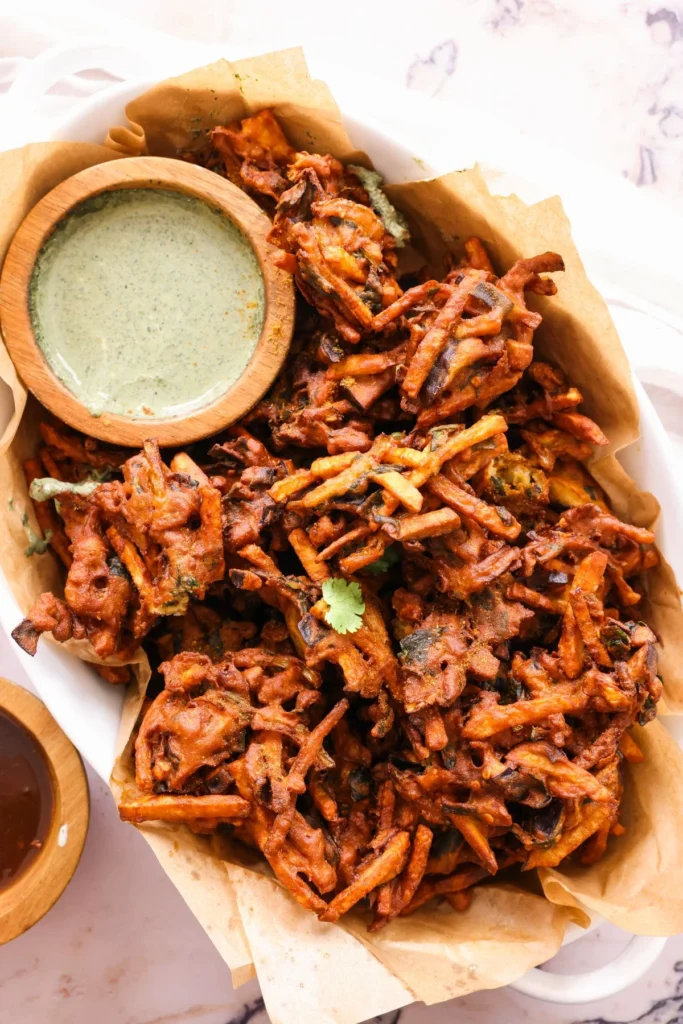
Pakoras are best enjoyed fresh and hot. Once they cool down, they tend to lose their crunch.
Serve them immediately with your favorite dips or chutneys. Some classic pairings include:
- Green chutney made with coriander, mint, and lemon juice
- Tamarind chutney for a tangy-sweet contrast
- Ketchup if you’re keeping it simple
- Masala chai – because pakoras and chai are the ultimate rainy-day duo
Optional touch: Garnish your pakoras with finely chopped onions, coriander, and a squeeze of lemon juice before serving for an extra burst of flavor.
Tips for Extra-Crispy Pakoras
Even seasoned cooks can miss a trick or two, so here are expert tips to make your pakoras turn out perfectly crunchy every time:
- Use cold water in the batter: It helps the pakoras turn crispier when fried.
- Avoid over-mixing: Overmixing the batter releases too much moisture, making it heavy.
- Add salt last: Salt draws out water from vegetables, thinning the batter—add it just before frying.
- Fry in small batches: Overcrowding lowers the oil temperature and makes pakoras soggy.
- Rice flour or cornflour is key: They create that irresistible crunch without greasiness.
- Rest the batter for 5 minutes: This allows flavors to meld and the besan to absorb moisture properly.
Variations to Try
Veg Pakoras are incredibly versatile—you can make countless versions depending on your mood or what’s in your kitchen.
1. Onion Pakoras (Kanda Bhajiya):
Thin onion slices mixed with gram flour and spices—perfectly crispy and full of flavor.
2. Spinach Pakoras (Palak Bhaji):
Whole spinach leaves dipped in batter and fried for a delicate, leafy crunch.
3. Cauliflower Pakoras (Gobi Pakoda):
Blanched cauliflower florets coated in batter for a hearty, bite-sized snack.
4. Paneer Pakoras:
Chunks of paneer marinated in spiced batter—soft inside, crisp outside.
5. Mixed Veg Pakoras:
A mix of onions, cabbage, carrots, and potatoes—the ultimate crowd-pleaser.
6. Bread Pakoras:
Slices of bread stuffed with spiced potatoes, dipped in batter, and fried—a heavier, filling version.
Healthier Cooking Alternatives
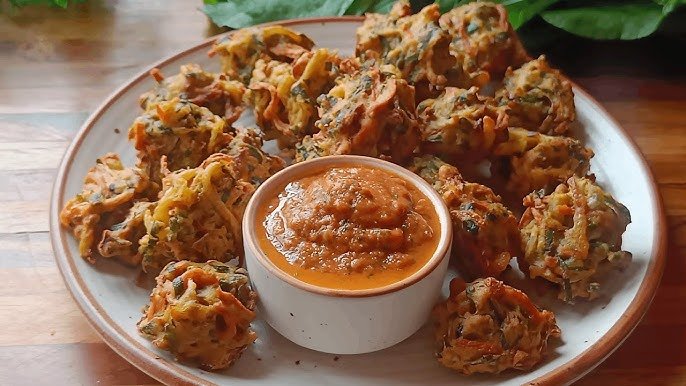
If you love pakoras but want a lighter version, try these:
- Air Fryer Pakoras: Spray a bit of oil on the batter-coated veggies and air fry at 180°C for 15–20 minutes, shaking halfway through.
- Baked Pakoras: Bake on a parchment-lined tray at 200°C for 25 minutes, flipping once. They won’t be as crispy as fried ones but are a guilt-free alternative.
Common Mistakes to Avoid
Even a simple recipe like this can go wrong without a few precautions:
- Don’t make the batter too runny—it should cling to the vegetables.
- Don’t fry on high flame—it’ll brown quickly but stay raw inside.
- Don’t use old oil—it affects the flavor and crispiness.
- Avoid leaving the batter out for too long; it thickens as vegetables release moisture.
Final Thoughts
Veg Pakoras are more than just a snack—they’re a celebration of India’s love for comfort food. Whether it’s the aroma wafting through the kitchen during monsoon evenings or the crunch that pairs perfectly with tea, pakoras never fail to delight.
By following these 5 simple steps, you’ll master the art of making pakoras that are crisp, flavorful, and beautifully golden—every single time.
So, grab your bowl of gram flour, heat up that oil, and get ready to enjoy the taste of pure happiness. After all, nothing beats the joy of biting into a hot, crispy pakora fresh from the pan!
